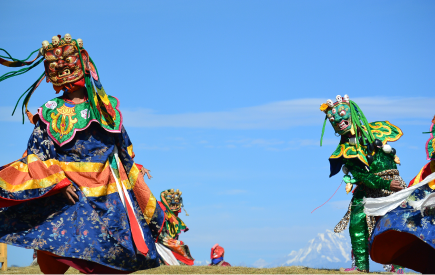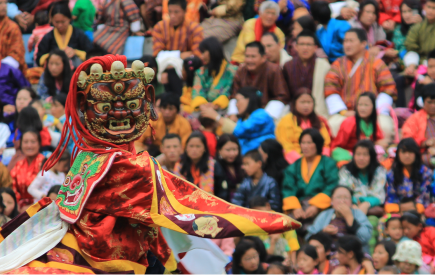Paro Festival

One of the most well-known festivals in Bhutan is the Paro Festival (Tshechu). held in Paro fortress every spring. It’s one of Bhutan’s biggest and most popular festival. featuring many different masks dancing perform by Monks and lay monks, which offered color and diversity without taking away from the festival’s spiritual value. It is an […]
Jambay Shrine Drup

The Bhutan Jambay Lhakhang Drup Festival is a unique festival held in one of the oldest shrines in the kingdom, called Jambay Lhakhang. It originated in the 7th century AD under the Tibetan ruler Songtsen Gampo. The festival is famous around the world for “the scared naked dance known as Ter Cham (Dance of Treasures)” […]
Black-Necked Crane Festival

In the Phobjikha Valley, the Gangtey Monastery hosts the Black-Necked Crane Festival. Its stunning beauty and holy valley are encircled by snow-capped mountains and lush meadows. The Black-necked Crane Festival, one of the popular festivals held annually in the winter, began in 1998. The festival is held to raise awareness of the need to protect […]
Punakha Festival

Punakha Tshechu (festival) is observed on the 10th day of the inaugural month of the Buddhist lunar calendar. Bhutan’s unique heritage, traditions, and chances for prayer and devotion are all preserved in a significant way through it. The unfurling of Guru Rinpoche’s thongdrol, which is believed to release and atone for sins, is the major […]
Druk Wangyel Festival

Druk Wangyel Festival, which is held every year on December 13th on Dochu-la Pass (3,088 m) at Druk Wangyel Temple, where the 108 memorial stupas are located, The Festival was established in 2011 in commemoration of His Majesty the Fourth Druk Gyelpo and the Armed Forces’ Victory Over Indian Insurgent Forces Residing in Southern Bhutan […]
Thimphu Festival

The Thimphu Tshechu is a significant festival in Bhutan. It was held in the nation’s capital city for three days on the 10th day of the 8th lunar month in honor of the Spiritual Master (Guru Padmasambhava). It included dance performances by monks and laypeople, which added color and variety without sacrificing the festival’s spiritual […]

